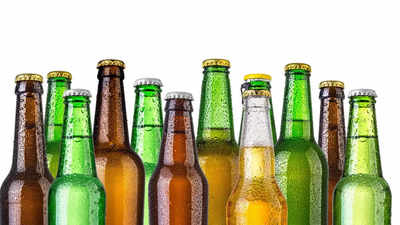Why Beer Bottles Are Brown or Green: The Science Behind the Colours

Why Beer Bottles Are Brown or Green: The Science Behind the Colours
Have you ever wondered why most beer bottles are brown or green? These colours aren’t just for aesthetics or marketing; they play a crucial role in preserving beer’s taste and freshness.
Beer has been bottled in glass since the 19th century because glass helps maintain freshness. However, brewers found that clear glass bottles were unsuitable for beer storage. Exposure to sunlight caused beer to develop an unpleasant smell and lose its flavour. This phenomenon, called “lightstruck,” occurs when ultraviolet (UV) rays react with hops, releasing foul-smelling compounds.
Brown bottles became the preferred choice as they offer the best UV protection, shielding beer from harmful light and preserving its delicate compounds. Even today, brown bottles dominate the brewing industry for their effectiveness in maintaining beer quality.
Green bottles gained popularity during World War II when brown glass was in short supply. Although green bottles do not provide the same UV protection, they become associated with premium-quality beer. Many breweries still use green bottles for branding and tradition, despite their vulnerability to light damage.
Clear bottles, while visually appealing, offer no UV protection. To combat this, some manufacturers now use UV-protective coatings on clear glass bottles, balancing visibility with protection.
Cans have emerged as a modern alternative. They provide 100% UV protection, ensuring the beer stays fresh. Additionally, cans chill quickly and are convenient for outdoor events.
Beer bottle colour isn’t just about style; it reflects a mix of science and consumer preferences. Next time you enjoy a beer, consider how its container helps deliver that perfect sip.
Moderate beer consumption may also offer health benefits, such as antioxidants, B vitamins, and silicon, which supports bone and heart health.











